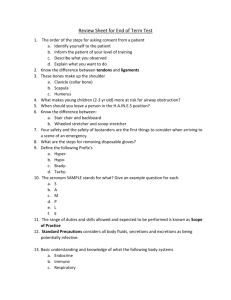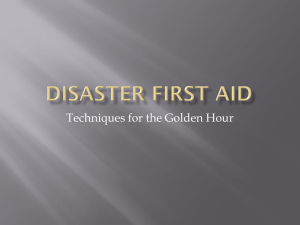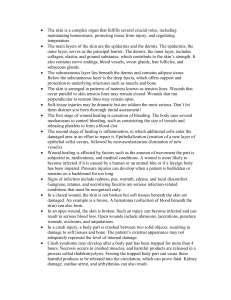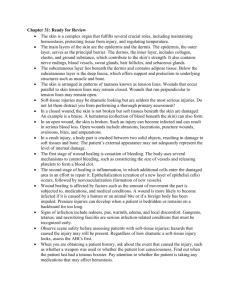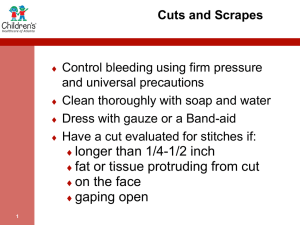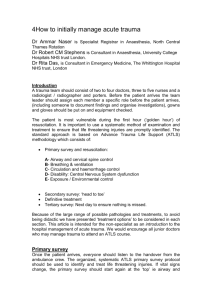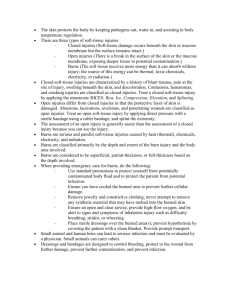Chapter 26
advertisement
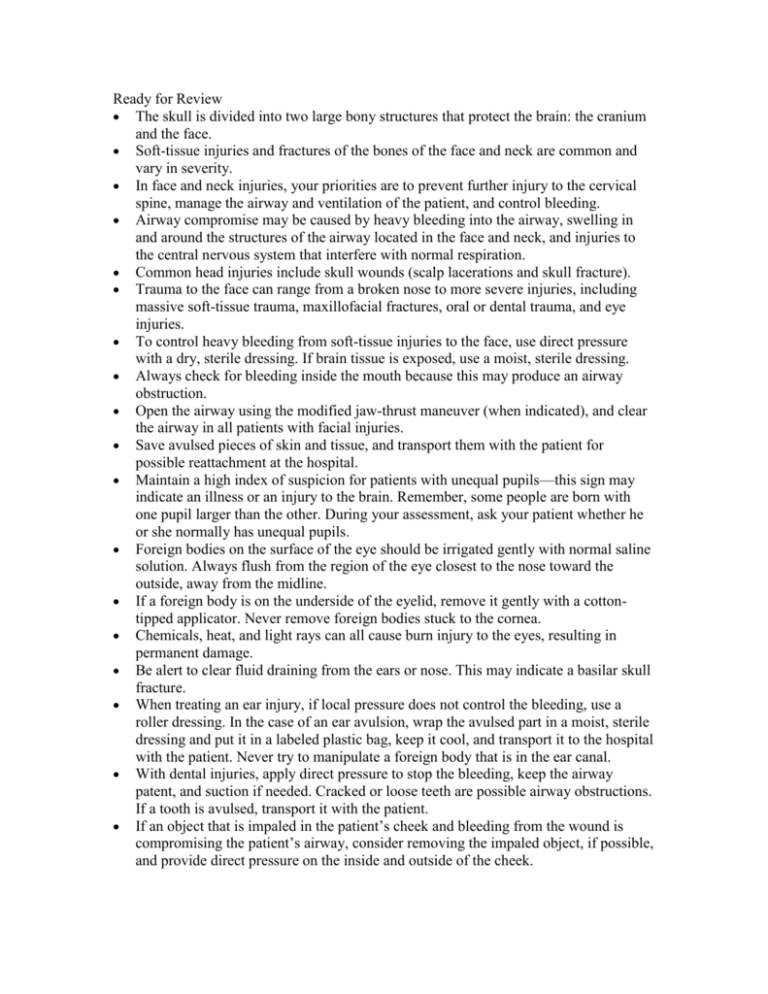
Ready for Review The skull is divided into two large bony structures that protect the brain: the cranium and the face. Soft-tissue injuries and fractures of the bones of the face and neck are common and vary in severity. In face and neck injuries, your priorities are to prevent further injury to the cervical spine, manage the airway and ventilation of the patient, and control bleeding. Airway compromise may be caused by heavy bleeding into the airway, swelling in and around the structures of the airway located in the face and neck, and injuries to the central nervous system that interfere with normal respiration. Common head injuries include skull wounds (scalp lacerations and skull fracture). Trauma to the face can range from a broken nose to more severe injuries, including massive soft-tissue trauma, maxillofacial fractures, oral or dental trauma, and eye injuries. To control heavy bleeding from soft-tissue injuries to the face, use direct pressure with a dry, sterile dressing. If brain tissue is exposed, use a moist, sterile dressing. Always check for bleeding inside the mouth because this may produce an airway obstruction. Open the airway using the modified jaw-thrust maneuver (when indicated), and clear the airway in all patients with facial injuries. Save avulsed pieces of skin and tissue, and transport them with the patient for possible reattachment at the hospital. Maintain a high index of suspicion for patients with unequal pupils—this sign may indicate an illness or an injury to the brain. Remember, some people are born with one pupil larger than the other. During your assessment, ask your patient whether he or she normally has unequal pupils. Foreign bodies on the surface of the eye should be irrigated gently with normal saline solution. Always flush from the region of the eye closest to the nose toward the outside, away from the midline. If a foreign body is on the underside of the eyelid, remove it gently with a cottontipped applicator. Never remove foreign bodies stuck to the cornea. Chemicals, heat, and light rays can all cause burn injury to the eyes, resulting in permanent damage. Be alert to clear fluid draining from the ears or nose. This may indicate a basilar skull fracture. When treating an ear injury, if local pressure does not control the bleeding, use a roller dressing. In the case of an ear avulsion, wrap the avulsed part in a moist, sterile dressing and put it in a labeled plastic bag, keep it cool, and transport it to the hospital with the patient. Never try to manipulate a foreign body that is in the ear canal. With dental injuries, apply direct pressure to stop the bleeding, keep the airway patent, and suction if needed. Cracked or loose teeth are possible airway obstructions. If a tooth is avulsed, transport it with the patient. If an object that is impaled in the patient’s cheek and bleeding from the wound is compromising the patient’s airway, consider removing the impaled object, if possible, and provide direct pressure on the inside and outside of the cheek. Blunt and penetrating trauma to the neck can produce life-threatening injuries. Palpate the neck for signs of subcutaneous emphysema. In patients with this sign, complete airway obstruction may develop in minutes. If bleeding is present from a penetrating injury, direct pressure over the site will usually control most forms of bleeding. Be alert to the possibility of an air embolism from an open neck injury. Place an occlusive dressing over the site, and provide direct pressure. Blunt force trauma can crush the larynx, resulting in soft-tissue injury, fractures, and potential spinal injury. Some of the signs and symptoms of larynx injuries include hoarseness, pain, difficulty swallowing (dysphagia), hemoptysis, cyanosis, sputum in the wound, subcutaneous emphysema, and structural irregularity. Aggressively manage the airway, and call for paramedic rendezvous.
